In a 2006 issue of Tips & Tricks magazine—issue #140—editor-in-chief Chris Bieniek wrote an essay on video game t-shirts that posed the question: “Collector’s Item or Fashion Statement?” In the piece, Bieniek introduces gaming t-shirts as a free promotional item, dismissing their value as collector’s pieces and noting the t-shirt’s ability accumulate fabric-related defects. “There’s no established price guide for these things,” he writes. “The resale value of a t-shirt diminishes greatly if the shirt is worn even once… nobody is going to pay for a used t-shirt that’s been faded from repeated washings and stretched to the shape of somebody else’s body.”
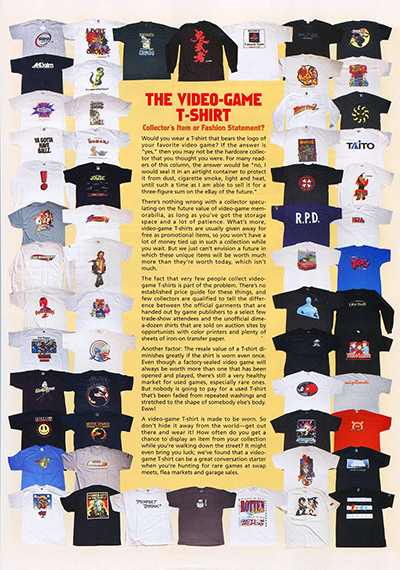
Credit: LFP, Inc.
Bieniek was only half-right. There isn’t an established price guide for t-shirts, and the closest thing to it was an old vintage marketplace called Defunkd, which, as of May 2018, started taking its name a little too literally.
But people do pay for old t-shirts. Over the past few years, secondhand clothing sellers have been steadily gathering traction within the economic conscious. Back in March, secondhand retailer Thredup, in conjunction with third-party research firm GlobalData, reported that secondhand retailers are projected to supplant fast fashion retailers like H&M, Zara, Forever 21 and Shasa in the next decade, becoming a $51 billion industry by the year 2023. These secondhand retailers include local thrift stores and online clothing like Poshmark, Depop and The RealReal.
And using those secondhand retailers are vintage sellers. The vintage market has seen its fair share of mainstream appeal, which surely helped catapult old clothing into the limelight and aiding in its trendiness. Jerry Lorenzo of high-end clothing company Fear of God worked a small part in creating vintage-inspired merchandise for Kanye West’s album Yeezus—which consequently introduced collectible clothing to a plethora of young, Ye-worshipping hypebeasts. Rapper Big Sean showed off his unsurprisingly expensive vintage rapper tee collection to Billboard, further peddling old-school coolness. Most recently, Vice News reported that the most popular vintage retailer chain in America, Round Two, is making $20 million a year via seven brick-and-mortar stores that specialize in selling vintage and hard to find clothing.
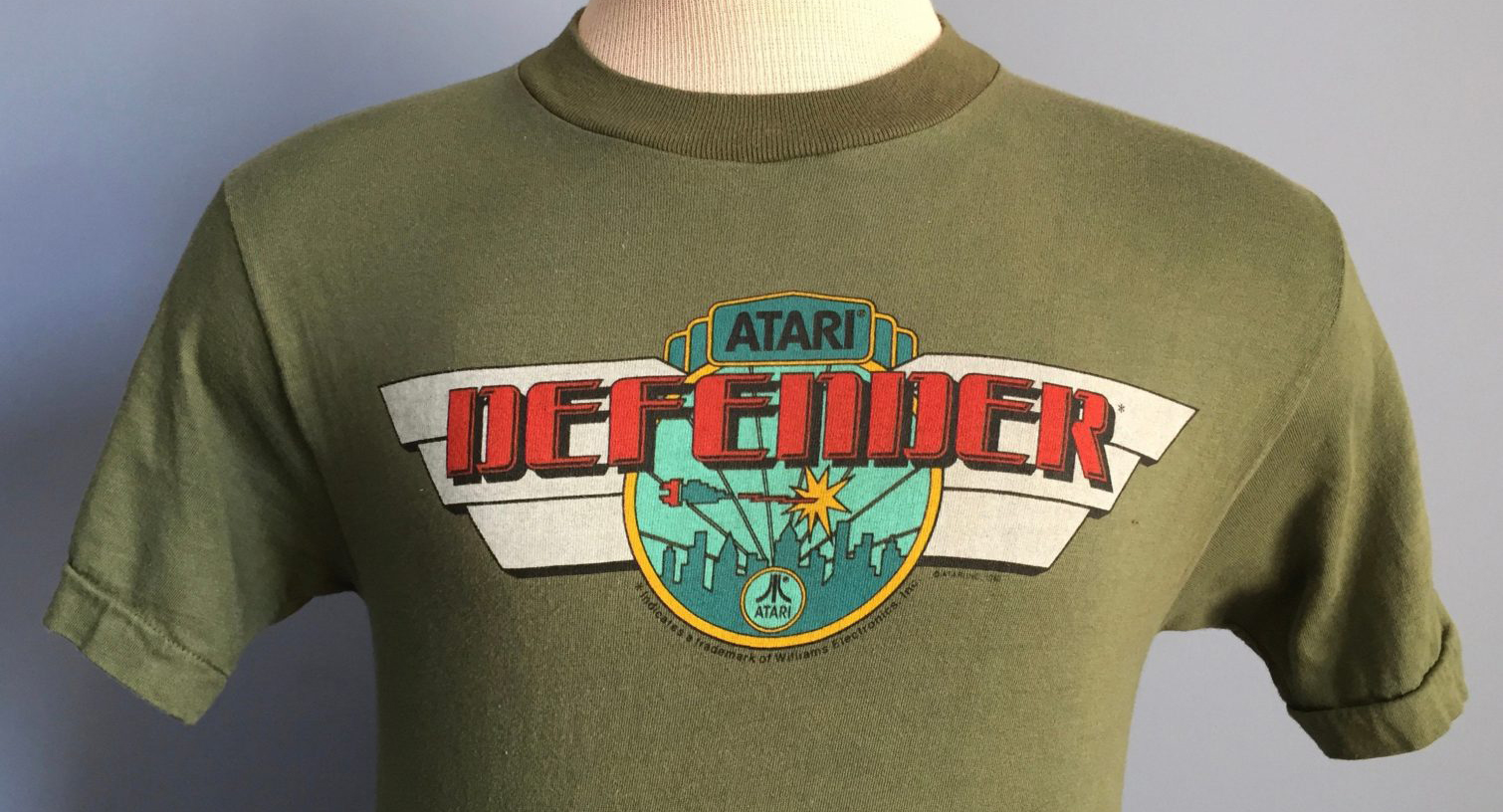
Sellers don’t just carry old brand name apparel, though. Sure, there’s money in selling ’90s Tommy Hilfiger and Ralph Lauren Polo button-ups. But the real money is in flipping old tour tees by artists like Madonna or The Grateful Dead, movie promo materials like film crew clothing items or free tees given out to Regal or AMC theater employees, and colorful early ’90s Harley Davidson shirts that show off massively printed bald eagles on them, either with or without an American flag present. And although the scene hasn’t really touched upon it much before in the past, it has now trended toward the subject of that Bieniek column: the video game tee.
I initially reached out to Bieniek, who now runs a gaming-related paper goods collection blog, Video Game Ephemera, to ask if he knew anything about early video game clothing and fabric-related promo materials. He explained how clothing had been a part of game publicity cycles since the ’80s, and were often handed out at trade shows or mailed to press or used as preorder incentives. “I’m a pretty big dude, so 95 percent of the clothing items that I acquired as a video game magazine editor did not fit me personally,” he said. “I used to save them in a huge box, and at one point I actually had enough video game-branded clothing to assemble an entire outfit, including shirt, pants, socks, shoes, hat, jacket… even underwear!” Most of his old game-related clothes now sit on display at the National Videogame Museum in Frisco, Texas.
My initial email also included a few Instagram links, as well as a few listed items on Grailed and Etsy. After looking at the prices the items on those sites were listed for, Bienek reflect back on his old Tips & Tricks column. “I guess my predictions were not very accurate, if it’s really true that people are paying $300 a pop for these things…”
People who sell valuable second-hand clothing hunt for garments that are old-school cool and tough to find, pricing them by rarity, condition and property. Most sellers hunt for shirts at their local Salvation Army, flea market, garage sale, or church thrift store, sifting through clothing racks to find the right shirt to purchase for a few dollars, gently wash and resell online. Some sellers spend their days at Goodwill Outlets—a discount store run by Goodwill in which clothes are sold by the pound—spending hours on end sifting through unwashed fabric to find their buried treasure. The most hardcore sellers purchase bales of clothing, spending $5,000 or more on a few tons of garments to search through, purchased by wholesalers who ship the clothes out overseas to use as insulation or to cycle through foreign retail economies.
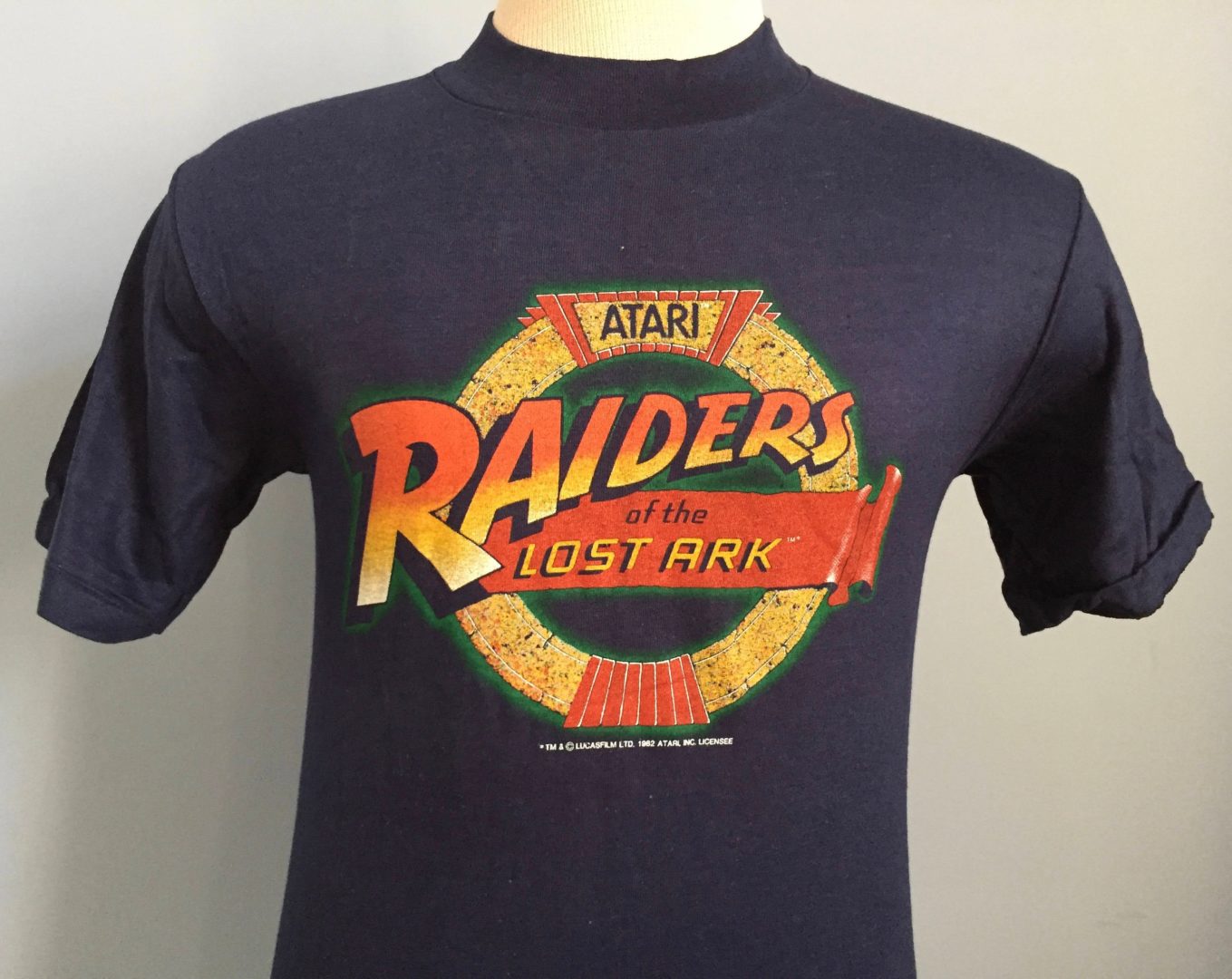
Los Angeles-based Eric Stran has been selling old tees for roughly seven years. His Etsy store, StranStarsBest, is stocked with over 1,000 tees spanning the last four decades of movies, wrestling, sports, music and gaming tees. He’s currently one of the only sellers found on Etsy who sells ’80s video game tees—undoubtedly a tough type of shirt to find.
“I’m in LA, and I used to go to the Rose Bowl Flea Market—which is massive—about once a month,” Stran tells me over the phone, detailing his own hunting methods. “I found a seller who was selling a bunch of stuff and he was selling tees for $5 a pop, didn’t matter what it was. He just kept getting new stuff all the time, but he was my main source.”
Living and operating out of LA, Stran has the upper hand over most other dealers who shop locally. “Everyone here is just from a different fucking place,” he explained. “Like, if I see stuff in Seattle, it’s just a bunch of Mariners’ shirts, or a bunch of SuperSonics shirts. But here, it’s every fucking thing. So many people are promotional lawyers, or they just work in all these crazy businesses, and they get all this stuff for free [from clients or promotional studios]. If they were like, I don’t know, working at a record company or some shit, they would just get stuff and place it in a cardboard box and just let it pile up in their home. And then eventually, it surfaces, and I need to be ready [to grab] it.”
Coleman Burke, who goes by CBsRetroTs on Instagram, is a collector who occasionally sells vintage clothing, but mainly hunts for old promo artifacts within the spectrum of video games. His Instagram feed is full of items rarely seen by the public, but that’s due to Burke’s hard-boiled detective skills and interest in acquiring staff-related items. “I think those are the real cool ones,” he tells me over Google Hangouts. “Those weren’t for sale to the public. It’s got a little bit of extra love to it.”
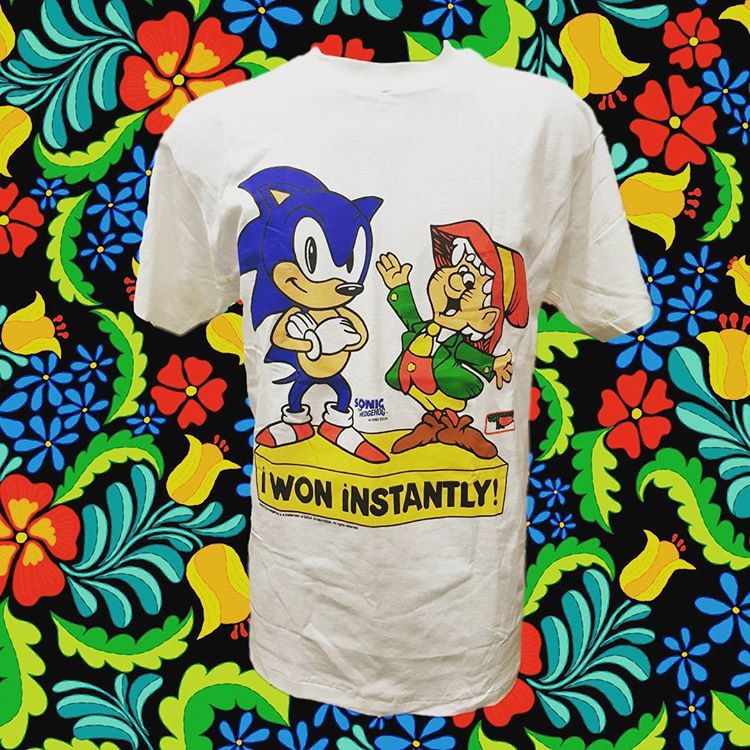
His method of finding collectible clothing is more unorthodox than Stran, or other hunters for that matter. “Sometimes I’ll Google really weird sets of words and search through comments where people are like, ‘Oh, I was at that event or I was at that promotion,’” Coleman said. “I’ll try to find those people on Facebook or something and write them a message and ask them about it. It’s detective work if you wanna get the good stuff. Like, if someone’s uncle worked [at Nintendo] for 15 years, I’ll write to them, like ‘Well, what’s your uncle doing with this cool jacket?’”
Luck is a major component of searching for grails, the finds that collectors will pay top dollar for. Sometimes by chance, a sliver of gold can lead to a goldmine. “I have a box of 25 original Raiders of the Lost Ark Atari promo shirts, all deadstock,” Stran said, using the term for an article of clothing that’s never been worn and is (usually) in its original packaging. “I got it from a guy on eBay who I saw was just selling them one at a time. I asked him, ‘How many of these do you have?’ He said, ‘I have 40.’ They were literally in his grandpa’s old Atari store and he found them in his attic when he died. I was like, ‘Cool, can I have them all?’”
Just as Stran acquired a box of old Raiders of the Lost Ark Atari tees, hunters like Vintage Orlando, The Heat Broker, vinniesvintage, and thethriftlord are able to find discarded promo shirts in Goodwill Outlet stores and thrift stores across their cities. Commonly found tees within the community are based on franchises like Ridge Racer, Tekken, Mario, Donkey Kong, Tony Hawk Pro Skater, and Tomb Raider. The earlier the shirt’s origin, the more likely it was a small or youth fit—video games were once only targeted to children, and as a result, adults weren’t regularly wearing video game merchandising unless working to sell them.
In the ’80s, most shirts came from mail-order forms found inside catalogs that sold video games. Sometimes shirts were preorder incentives or bundled with the games themselves. In some cases, games came with mail-order forms printed on the back of their boxes. Atari catalogs from the ’80s showed consumers what products they could purchase through mail-order forms, and rewarded them for loyalty. The purchase of five game cartridges for the Atari 2600 meant that you were eligible to get a free Atari t-shirt. The Atari Age 1982 Christmas catalog shows off gift ideas for the holiday season, including an Atari-branded vest, backpack, duffle bag, and a Berzerk t-shirt.
Today, these shirt hunters are more likely to uncover a ’90s or early ’00s video game promo tee out in the wild over a ’70s or an ’80s tee. Hunting for promo items that originated in the ’90s becomes easier, but also more widespread due to video game popularity booming in that era. The ’90s saw more gaming shirts surface through catalogs, but also with the addition of exclusive promo tees that were sent to EB Games, Toys “R” Us and GameStop employees as well as gaming press and journalists. Saturday morning cartoons on Kids WB and Fox Kids allowed viewers to dial in and win tees from game companies. Sometimes massive marketing promotions with snack products granted kids the chance to win a product ad shirt, like a tee featuring Sonic the Hedgehog standing next to the Keebler Elf, promoting some giveaway where they could “win instantly.”
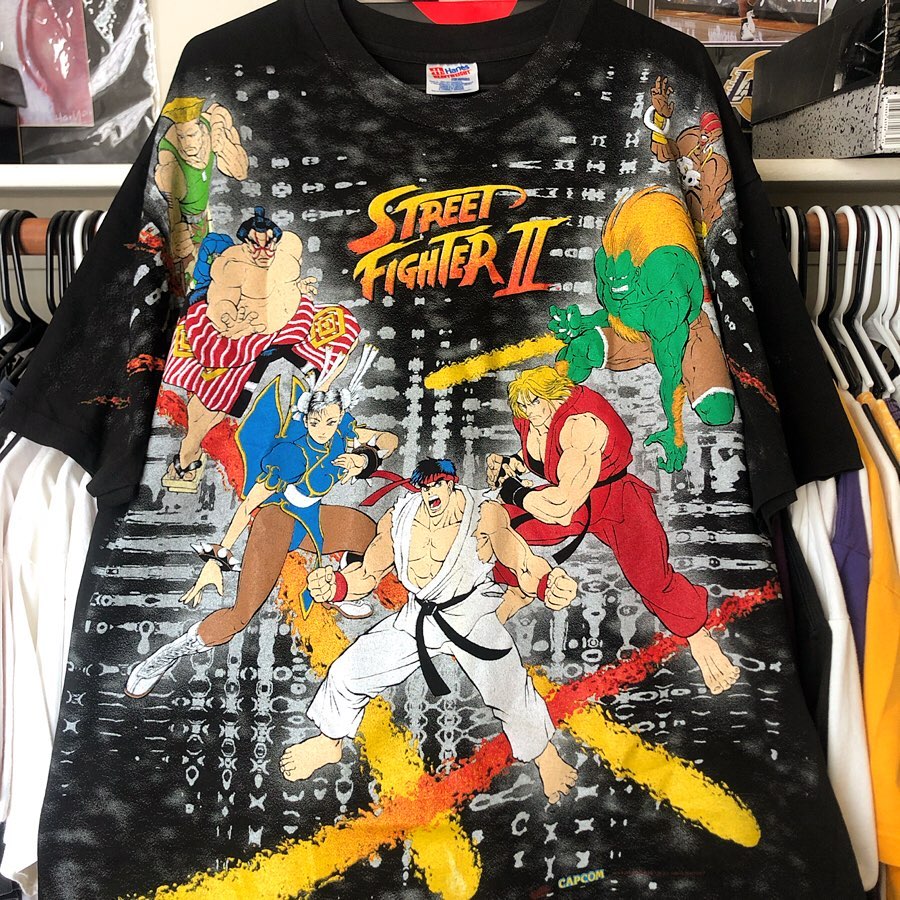
The onslaught of video gaming magazines also gave players more opportunities to grab a gaming tee. Notably, Nintendo Power allowed the first-party game company to offer fans new ways of showing off their love of Nintendo properties. A look inside the first issue reveals a contest that gives readers the opportunity to win one of 50 Nintendo Power hockey jerseys. The tagline for the promo taunts us today: “You can’t buy them in a store. The only way to get one of these fantastic shirts is to win one.”
Of course, there’s also the game industry staffers themselves, who wore exclusive employee-only clothes. Burke told me about Nintendo merchandisers in the ’90s, now officially known as sales representatives, and how they were given clothing as reward incentives. “With Nintendo specifically,” he explained, “there was about up to 200 of them that would travel around the U.S. and go to different places, like Toys ‘R’ Us or EB Games, and they would set up their displays. They were like field scout guys. Those guys, at their yearly meetings, would be given awards, shirts and hats that were only available to those working in merchandising. It was to show appreciation, and all those items are cool, because, you know they’re limited to 200.”
The vast amount of free t-shirts, contest giveaway products and mail-in order merchandise are all examples of tees that add to the resale market that grows today. Since there aren’t any pricing guides for old tees, gaming shirts present dealers an extra layer of difficulty when selling. This makes prices seem unfair, given that the sellers themselves are the gatekeepers who price by how often they discover those shirts, how many of them they can find about them online, and how other sellers are pricing their items.
Over the phone, Stran revealed his personal process for identifying video game shirts. He learned to build a reference database by way of Pinterest and a collection of old Sears catalogs. By flipping through the Sears ads at home, as well as sifting through scans of old Atari catalogs, Stran is able to find and identify old shirts he acquired for his collection, putting an exact date on tees that don’t have dates in their logos or tags, and pricing them accordingly for his shop.
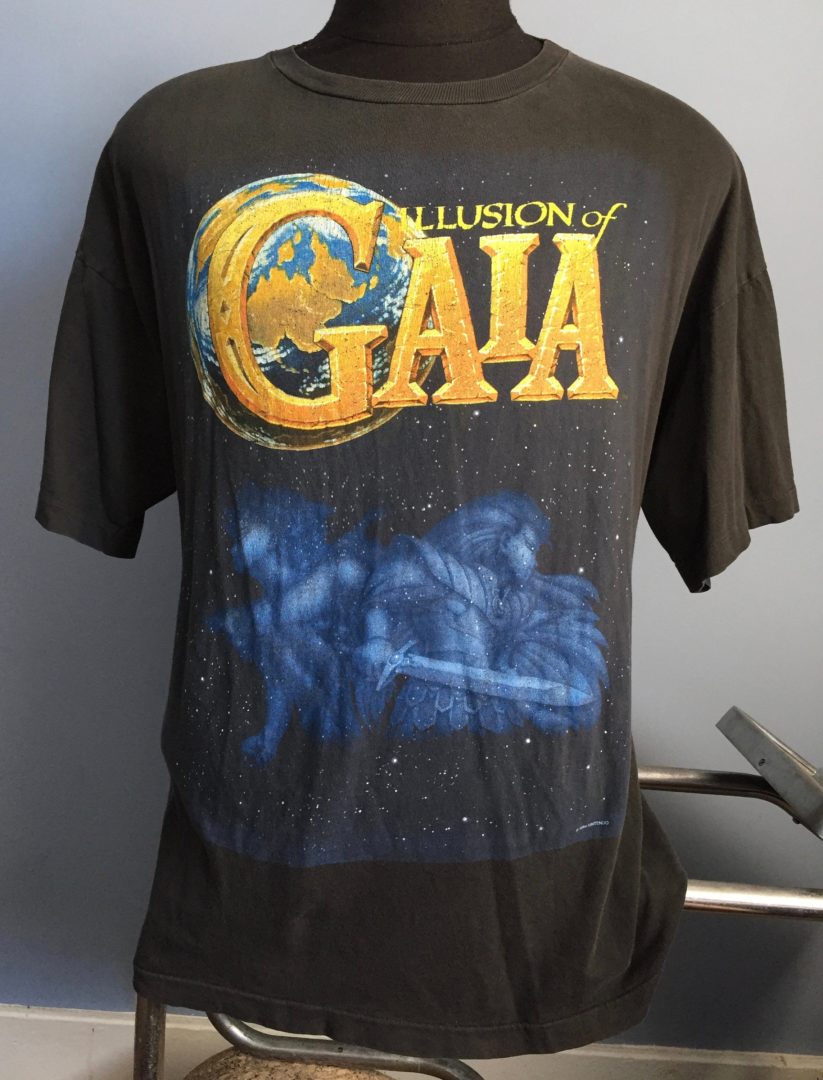
Stran’s store is currently selling arcade tees based on locations that have been lost by time, like Arnie’s Place, or Bally’s Aladdin’s Castle. He’s stocked a small Asteroids shirt, a Defender tee and a Pac-Man Fanatic iron-on tank top. He’s also selling an Illusions of Gaia tee, which he tells me is easy to find, and it was included when purchasing the original game for the SNES. He found a Shadow of the Beast shirt in amazing shape which he picked up on eBay and is reselling for $90 in his store. The only way to have owned an original Shadow of the Beast shirt was mailing in an order form or calling a toll-free number, an incentive to drive the game’s sales.
“Video game companies were really good about putting on the date,” Stran said of reading a shirt’s logo trademark. “I’ve tried to put aside every vintage game shirt ad I’ve seen, and I try to hunt for them.… It’s just not that prevalent. I want to just know what I see when I find it. Ninety percent of the time, when you do find something, you don’t know if what you’re finding is real, or if it’s a reproduction. I want to see where it came from.”
Since identifying a tee’s production history comes easily to those with experience, the gatekeeping aspect of selling often comes into play. Mitch Malinowski, Instagram clothing seller VintageOrlando, met me in person to discuss some of the tees he’s seen by way of his peers. Malinowski excitedly tells me about one of his peers, TheHeatBroker, and his recent Goodwill Outlet find.
“It’s Mario throwing Bowser at the end of clearing each floor of the castle [in Super Mario 64],” Mitch tells me of the shirt. “It’s so iconic, especially within the speedrunning community where it’s done over and over again—that’s a picture of the final moment that means so much. I want to do more research on that tee, I don’t know where it came from. It doesn’t seem like it fit in an instruction manual booklet. Why would they put it there? It shows the final move. My final guess is it was a Nintendo Power giveaway shirt.”
A guess is sometimes as good as it gets. Sellers alone harness the power to price a shirt based on experience handling other shirts from the same era. Reading tags and identifying the year a shirt was printed factors into pricing, as does its condition—though small tears, holes and stains on a shirt build character for most vintage heads. An old shirt that Bieniek wouldn’t have wanted to wear is a modern day collector’s dream fit.
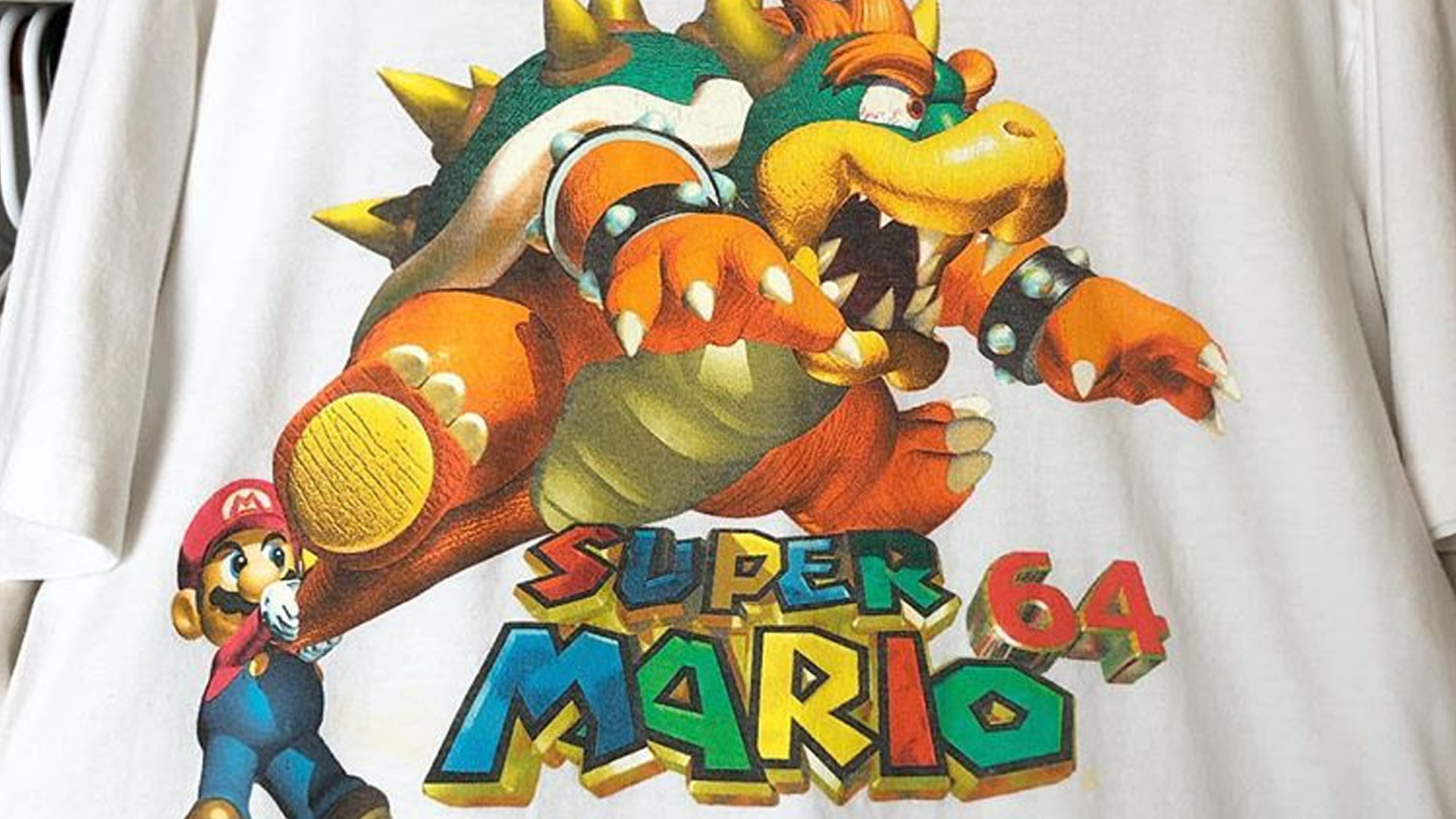
Last month, a Reddit user by the name of blobbyboys posted a photo of an original 1990 Nintendo World Championships t-shirt to the VintageTees subreddit. The shirt is black, but features multi-printed colors. The graphic on the tee has cracklings to show it’s aged.
“I posted it on Reddit—social media across the board, really,” Robert Hansee, the original author of the post, who works full time as a vintage clothing dealer, told me over the phone. “When I posted it on Reddit, it was met with positive reception, although I got a lot of DMs with people accusing me it was fake. It’s hard for me to wrap my head around it, since, well, I purchased it myself in 1990.”
Hot Topic reproduced the shirt in the early ’00s, showing Link holding his sword and shield, kneeling down just above Nintendo’s logo. Hansee’s shirt has Donkey Kong standing above Nintendo’s logo. These nuanced design differences are important distinctions for collectors attempting to place value on their clothing.
“Before I posted it, I really dove in,” he told me. “I wanted to see if there were any others, and if they sold, what their price points were. I didn’t want to just pull a number out of my ass. In the past five years, nothing has really shown up. I couldn’t really find anything. The only couple of things that popped up—there was this NintendoAge forum post where this guy had shown off 20 pages worth of all kinds of stuff from the ’90s, and it’s all personal stuff that he’s not selling, but also just a lot of stuff like cups and posters. The only other thing I found that was NWC related was a staff jumpsuit. The people who were running the event wore them, and it sold for $10,000 last year on eBay.”
By considering the price of an authentic gold Nintendo World Championships cartridge, which can run anywhere between $1,000 to $100,000, and comparing it to the $10,000 staff jumpsuit, Robert settled on a price he deemed worthy based on lore, selling experience, and the exclusivity of the once-forgotten event. “I decided to put it up for $2,000,” he said. An educated guess, based on the little information he was able to find—though he’s since lowered the price to $1,100.
A month later, I followed up with Hansee to ask how the shirt was selling. “I’ve had a few serious interested buyers, but they either fell through or ghosted me completely.” I asked Hansee what he’d do if he couldn’t sell it. “I’m confident that it’ll sell eventually,” he reassured. “I want it to go to someone who will appreciate the historical aspect of it, as well as the rarity of such a piece. However, someone with that way of thinking about it doesn’t come along as often as the droves of lowball offer folks.”
The article has been updated to clarify Robert Hansee’s involvement in the vintage clothing scene.
Header image: photo illustration based on image courtesy of Robert Hansee.
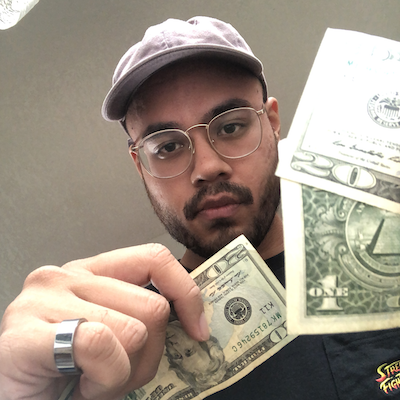
Kevin Cortez is a writer based in Orlando, Florida with bylines at Genius, EARMILK, Mass Appeal, The A.V. Club and Ambrosia for Heads. He enjoys reading about hip-hop in his spare time. Follow his work and incredible tweets at @AOLNetscape.